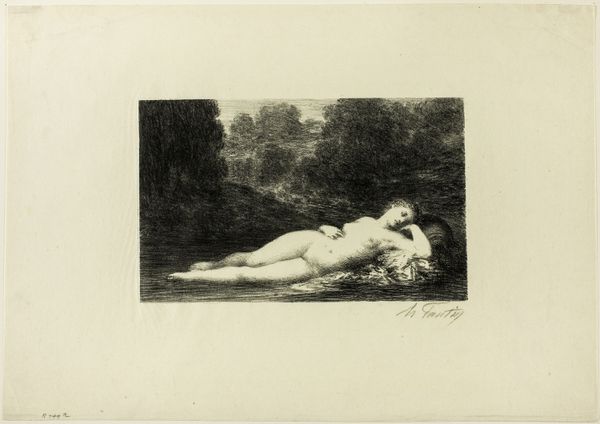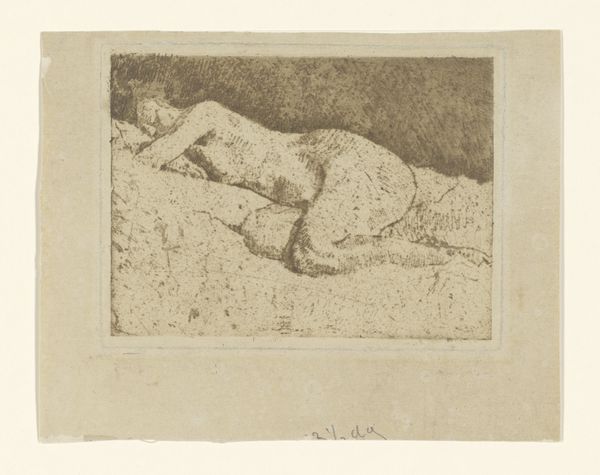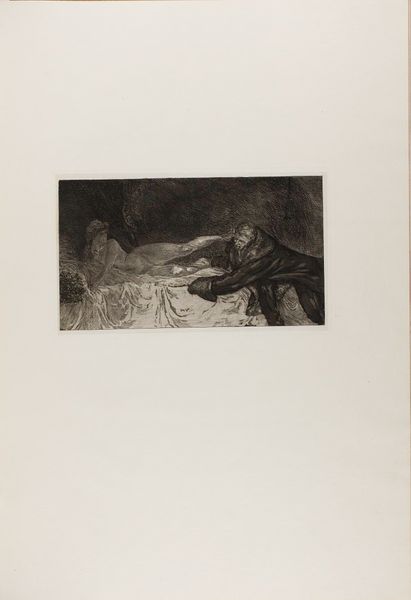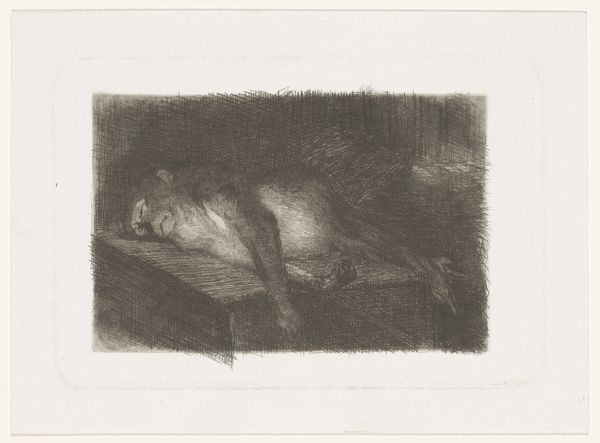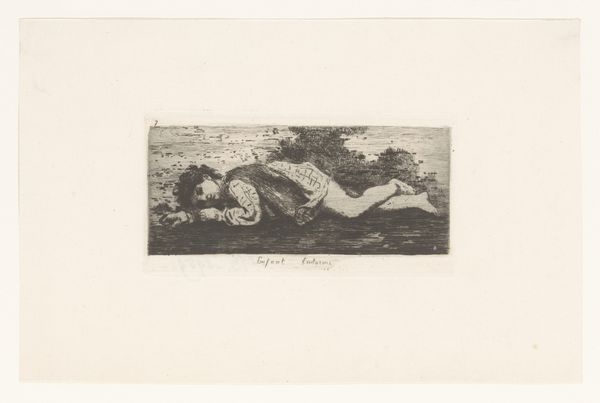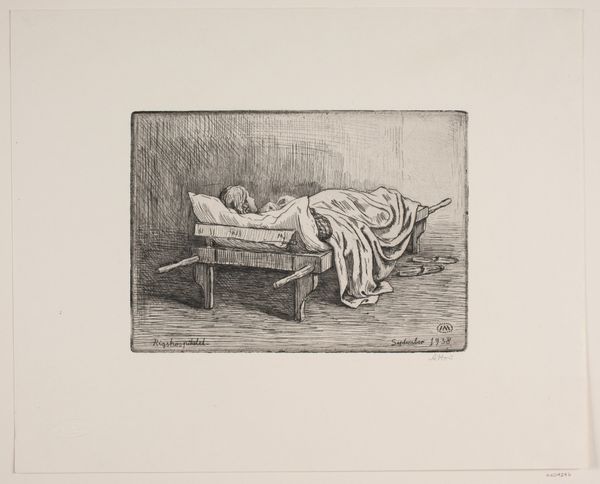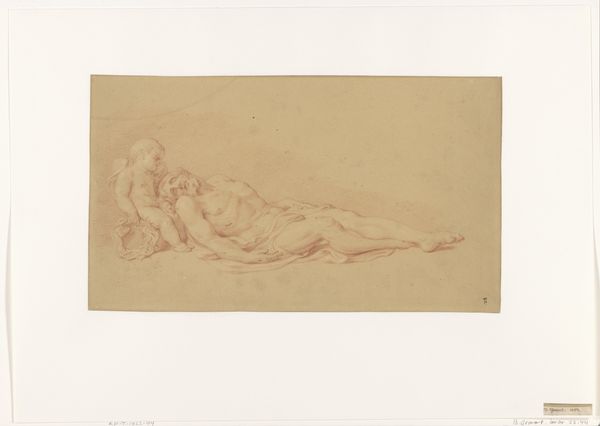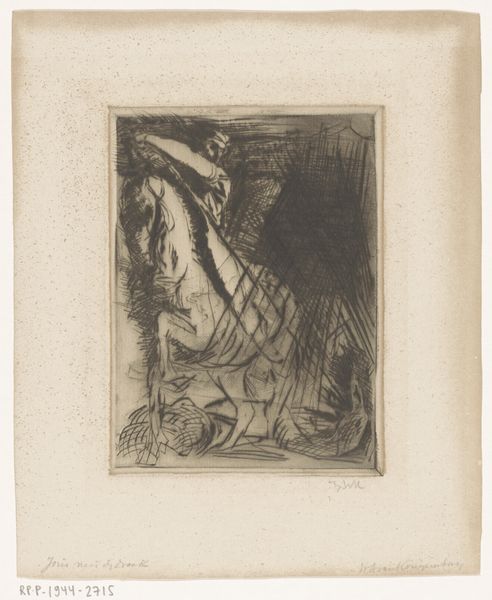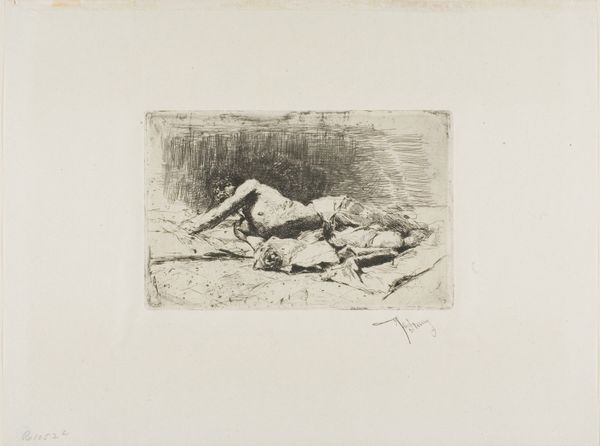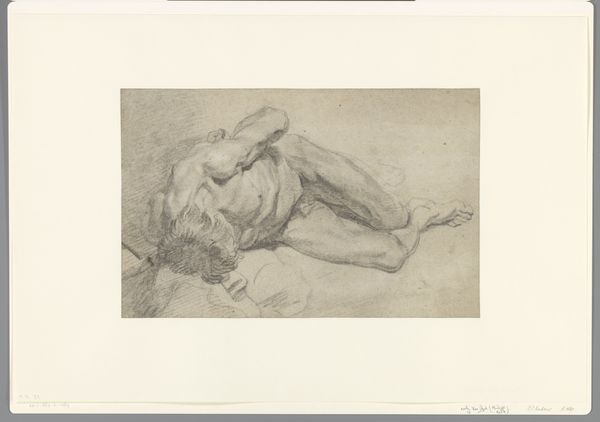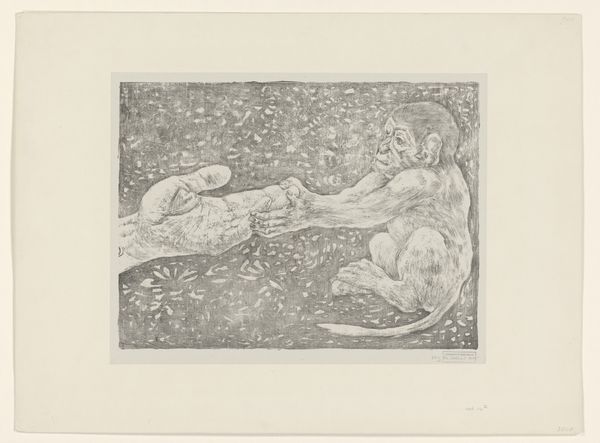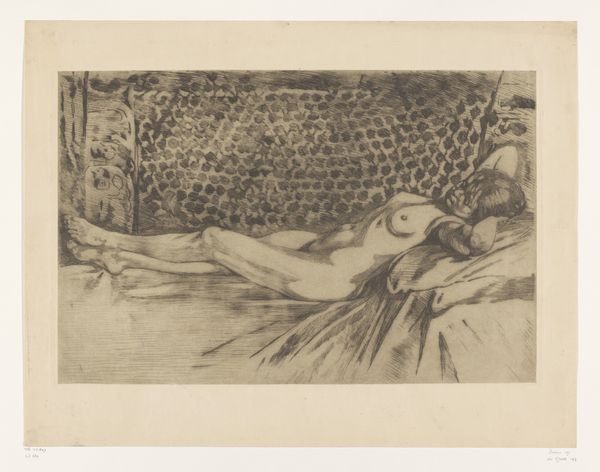
drawing, print, paper, pencil, charcoal
#
drawing
#
narrative-art
# print
#
charcoal drawing
#
paper
#
pencil drawing
#
pencil
#
genre-painting
#
charcoal
Dimensions: 123 × 219 mm (image); 159 × 239 mm (plate); 295 × 403 mm (sheet)
Copyright: Public Domain
Curator: Gaston La Touche created this compelling print in 1878, titled "Plate from l'Assommoir (woman lying on floor)." It's a work rendered in pencil and charcoal on paper, currently residing here at the Art Institute of Chicago. Editor: It's… bleak. The darkness really enshrouds the scene, focusing your attention on the fallen woman and that imposing pair of legs. There’s a powerful sense of claustrophobia. Curator: La Touche was illustrating Émile Zola’s novel *L’Assommoir*, a stark portrayal of working-class Parisian life and its descent into poverty and alcoholism. This image is directly lifted from a particularly devastating scene. Considering the public's appetite for Realism and Naturalism at this moment, Zola and La Touche are undeniably answering a cultural hunger. Editor: Absolutely. The woman's posture… the vulnerability is almost unbearable. This image speaks to systemic oppression. Are we to assume the person standing is implicitly the aggressor, or someone complicit by standing there as the helpless victim has clearly collapsed? This feels intersectional—class, gender, all culminating in utter powerlessness. Curator: Precisely! And what's also vital is the agency with which Zola represented the working class. Before the widespread labor movements and early forms of social work, such scenes were likely absent from both mainstream press and artistic production, which served elite clientele and government. Editor: Looking closely, it's interesting to consider that this is just a drawing, isn’t it? La Touche uses very fine lines in some areas but then these smudges of charcoal create almost impenetrable darkness around the woman's body. It underscores a sense of desperation, the emotional and psychological "blacking out" related to her situation, and the despair in the face of an uncertain tomorrow for her class of Parisian women. Curator: Agreed, that tenebrism effectively embodies the thematic weight of this narrative—of Zola’s work, of La Touche's—as the viewer considers a narrative of poverty. And La Touche has several other similar illustrations for Zola novels, allowing the public access to a larger view of fin-de-siècle Parisian poverty. Editor: Well, I find that context extremely helpful in grappling with the raw emotion conveyed. It shifts my reading away from individual tragedy toward something much larger and unfortunately repeatable in contemporary times. Curator: Exactly, these types of works still hold so much weight today, given contemporary societal inequalities, unfortunately. Editor: It leaves a mark on the consciousness, that’s for certain.
Comments
No comments
Be the first to comment and join the conversation on the ultimate creative platform.

